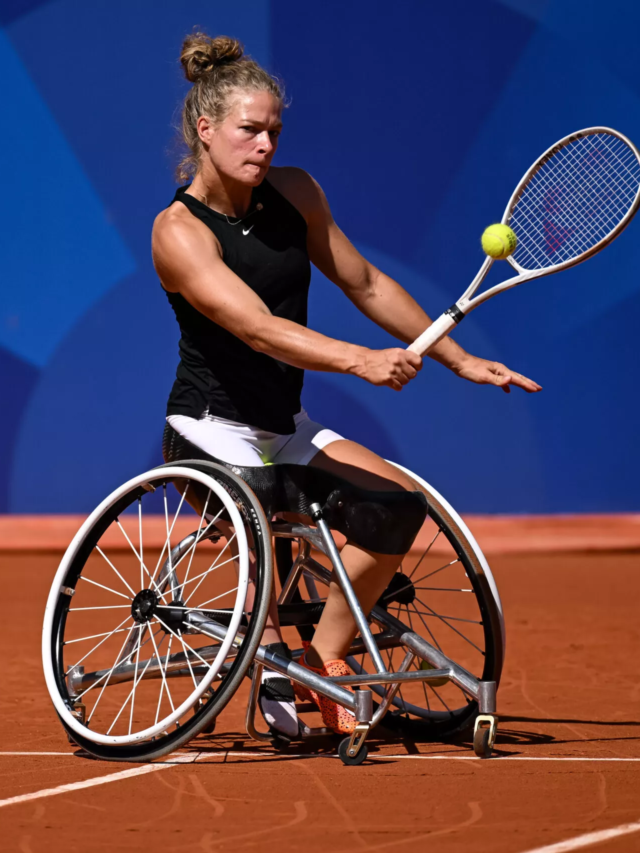10 Key Points About Wheelchair Tennis at the Paris 2024 Paralympics
- Introduction to Wheelchair Tennis
Wheelchair tennis is one of the most popular events in the Paralympics, captivating audiences worldwide. This year, the Paris 2024 Paralympics will host the event at the Roland-Garros Stadium, known for its rich tennis history. Wheelchair tennis is a fast-paced, dynamic sport that showcases athletes’ skills and perseverance. It is a testament to human resilience and sportsmanship, making it a must-watch event. With rising popularity and recognition, including its own Google Doodle, wheelchair tennis continues to inspire and bring attention to adaptive sports. - History of Wheelchair Tennis
Wheelchair tennis was invented in 1976 by Brad Parks and Jeff Minnebraker. After Parks suffered a freestyle skiing accident, he was determined to stay active during rehabilitation. With Minnebraker, another patient, the two adapted tennis to suit their wheelchairs and began practicing on local courts. Their perseverance paid off, as they developed a new sport. Wheelchair tennis made its debut as an exhibition sport in the 1988 Paralympics and became a full medal sport at the 1992 Barcelona Games, marking a major milestone in the world of adaptive sports. - Brad Parks and the Birth of the Sport
Brad Parks is considered the father of wheelchair tennis. His determination and collaboration with fellow patient Jeff Minnebraker led to the development of the sport. Parks’ journey started when someone questioned their effort, asking, “Why do you guys even bother?” This remark pushed the two to work even harder to prove that tennis could be played from a wheelchair. Parks’ passion and dedication eventually turned wheelchair tennis into an internationally recognized sport, inspiring countless individuals with disabilities to take up the game. - Wheelchair Tennis as a Paralympic Event
Wheelchair tennis gained widespread attention when it became a full medal sport in the Paralympic Games in 1992. It has been a staple ever since, growing in popularity with every edition. The sport’s inclusion in the Paralympics paved the way for greater recognition of adaptive sports, providing a platform for athletes with disabilities to showcase their talents on the world stage. At the Paris 2024 Paralympics, the competition will once again be fierce, with top players from around the globe vying for medals. - Rules of Wheelchair Tennis
The rules of wheelchair tennis are very similar to standing tennis, but with two key differences. Athletes use specially designed wheelchairs, and the tennis ball is allowed to bounce twice before being returned. This second bounce can land inside or outside the court boundaries. Aside from these differences, all other rules of tennis apply, including scoring and terminology. The adaptability of the game ensures it remains competitive and exciting, whether played by athletes on foot or those using wheelchairs. - Specially Designed Wheelchairs for Tennis
Wheelchair tennis athletes use highly specialized wheelchairs designed for speed and agility. These wheelchairs are lightweight, with cambered wheels to enhance stability and allow for quick turns and movements across the court. The customization of these chairs enables players to perform at their highest level, giving them the ability to chase down balls, serve with precision, and compete with intensity. These wheelchairs are integral to the sport’s success, enabling athletes to compete on par with their standing counterparts. - The Two Categories of Wheelchair Tennis
Wheelchair tennis is divided into two categories: Open and Quad. The Open category includes athletes with lower-limb impairments but full function of their arms, while the Quad category consists of players with impairments in both upper and lower limbs. The Quad events are mixed-gender, offering a unique dynamic in competition. These categories ensure that athletes with various levels of disability can compete at their highest capacity, showcasing their skills in both singles and doubles matches at the Paralympics. - Scoring in Wheelchair Tennis
Wheelchair tennis follows the same scoring system as traditional tennis, with points, games, sets, and matches. However, players can lose points in unique situations specific to the sport. For instance, a player can lose a point if they fail to return the ball before the third bounce or if they lift from their wheelchair while hitting the ball. These rules ensure that wheelchair tennis maintains the integrity of the game while adapting it for athletes with disabilities, creating an exciting and fair competition for all. - The Growing Popularity of Wheelchair Tennis
Since its introduction, wheelchair tennis has steadily grown in popularity. It is now one of the most-watched events in the Paralympics, with fans worldwide admiring the skill and tenacity of the athletes. The sport’s growth is reflected in its mainstream recognition, including its recent appearance in a Google Doodle. This attention has helped raise awareness for adaptive sports and inspired more individuals with disabilities to take up wheelchair tennis, further expanding its reach and impact on the sports community. - Wheelchair Tennis at the Paris 2024 Paralympics
The wheelchair tennis events at the Paris 2024 Paralympics will take place at the famous Roland-Garros Stadium. With top athletes from around the world competing, the event promises to be an intense showcase of skill, strategy, and determination. Whether you are a tennis enthusiast or new to the sport, wheelchair tennis at the Paralympics is a must-watch event that will leave you inspired by the athletes’ abilities and perseverance. Make sure to tune in and support these incredible competitors!


